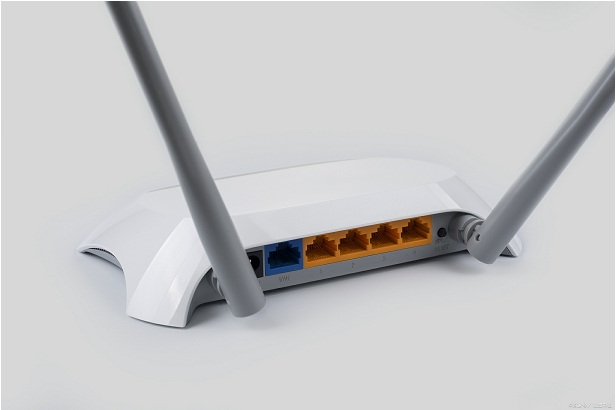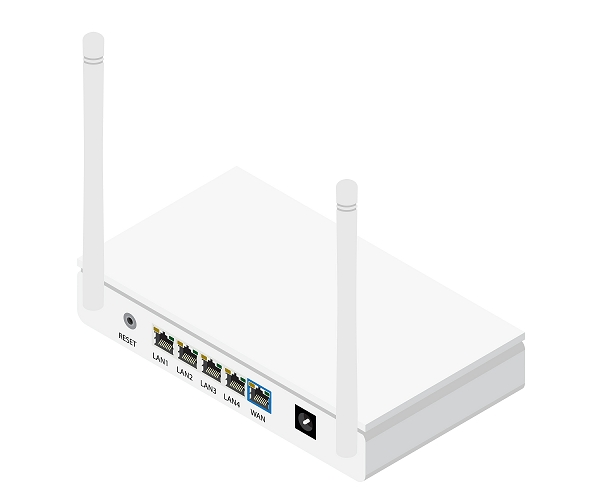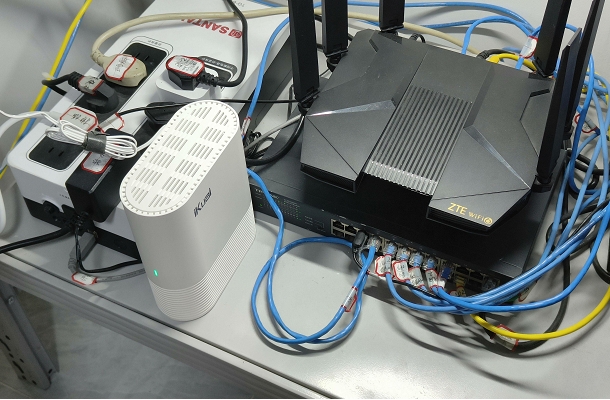怎么更改wifi密码小米路由器(小米路由改WiFi密码)
作者:路由通
|
 96人看过
96人看过
发布时间:2025-05-03 04:32:32
标签:
在智能家居生态中,小米路由器凭借其高性价比和易用性成为许多家庭的首选网络设备。更改WiFi密码作为保障网络安全的核心操作,涉及设备管理、权限控制、加密协议等多个技术层面。本文将从操作流程、安全策略、设备兼容性等八个维度展开深度分析,结合小米

在智能家居生态中,小米路由器凭借其高性价比和易用性成为许多家庭的首选网络设备。更改WiFi密码作为保障网络安全的核心操作,涉及设备管理、权限控制、加密协议等多个技术层面。本文将从操作流程、安全策略、设备兼容性等八个维度展开深度分析,结合小米路由器多型号特性与实际使用场景,提供系统性解决方案。

一、核心操作路径与权限验证
小米路由器的WiFi密码修改需通过管理后台完成,不同型号存在细微差异。基础操作流程包含:
- 通过浏览器访问192.168.31.1或miwifi.com登录管理界面
- 输入管理员账号(默认均为admin)及密码
- 进入「无线设置」-「WiFi密码」修改字段
- 保存配置并重启网络服务
| 操作环节 | Pro型 | 4A/4C千兆版 | Redmi路由器 |
|---|---|---|---|
| 管理地址 | 192.168.31.1 | miwifi.com | 192.168.31.1 |
| 默认账号 | admin(首次强制修改) | admin(可保留) | 与小米账号绑定 |
| 密码强度检测 | 支持复杂度校验 | 仅长度限制 | 混合校验规则 |
二、多终端协同修改方案
除传统网页端操作外,小米路由器支持:
- 米家APP远程控制(需绑定设备)
- 微信网关功能(扫码直达管理页面)
- Mesh组网集中管理(多节点同步修改)
| 修改方式 | 操作便捷性 | 功能完整性 | 适用场景 |
|---|---|---|---|
| 网页端 | ★★★☆☆ | 完整功能支持 | 复杂网络环境 |
| 米家APP | ★★★★★ | 基础功能子集 | 移动场景应急 |
| 微信网关 | ★★★☆☆ | 仅限核心设置 | 访客临时授权 |
三、安全策略强化机制
密码修改需配合以下安全措施:
- 启用WPA3-Personal加密协议(需设备支持)
- 关闭WPS一键连接功能
- 设置访客网络隔离
- 开启网络防火墙(针对2.4G/5G频段)
| 安全维度 | 基础配置 | 增强方案 | 风险等级 |
|---|---|---|---|
| 加密方式 | WPA2-PSK | WPA3+802.1x | 中/高 |
| 认证类型 | PSK预共享密钥 | 企业级证书认证 | 低/高 |
| 设备识别 | MAC地址过滤 | AI智能设备识别 | 中/高 |
四、固件版本适配性分析
不同固件版本对操作流程的影响:
- 稳定版固件:界面布局固定,功能入口统一
- 开发版固件:新增实验室功能,可能存在入口变动
- 第三方改版固件:需验证管理权限继承关系
| 固件类型 | 密码修改路径 | 功能扩展性 | 更新频率 |
|---|---|---|---|
| 官方稳定版 | 固定二级菜单 | 基础网络设置 | 季度更新 |
| 开发内测版 | 动态菜单入口 | 支持脚本自动化 | 月度更新 |
| 第三方OpenWRT | LuCI界面配置 | 高度自定义 | 持续更新 |
五、异常场景处理方案
常见故障及应对策略:
- 忘记管理密码:通过Reset键恢复出厂设置(需重新配置网络)
- 5G频段修改失败:检查信道带宽设置(建议自动模式)
- Mesh网络同步异常:强制刷新组网拓扑
- 客户端断连问题:清除设备缓存并重启路由器
| 故障类型 | 处理优先级 | 影响范围 | 解决时效 |
|---|---|---|---|
| 密码遗忘 | 高(立即处理) | 全部设备断网 | 10分钟级 |
| 频段冲突 | 中(需检测环境) | 单频段设备 | 30分钟级 |
| Mesh失联 | 低(可暂缓) | 部分节点 | 1小时级 |
六、跨平台数据迁移注意事项
更换路由器时的数据继承方案:
- 通过米家APP备份配置文件(.bin格式)
- 使用U盘拷贝数据库文件(/www/目录)
- 注意SSID广播名称的一致性设置
- 重新绑定小米/Redmi账号体系
| 迁移要素 | 操作难度 | 数据完整性 | 兼容性评级 |
|---|---|---|---|
| WiFi名称 | 简单(直接复制) | 完整保留 | ★★★★★ |
| 设备MAC列表 | 中等(需导出导入) | 部分丢失 | ★★★☆☆ |
| 家长控制策略 | 复杂(需重新配置) | 无法继承 | ★★☆☆☆ |
七、企业级安全扩展方案
针对商业场景的增强配置:
- 设置RADIUS服务器认证(需专业版固件)
- 划分VLAN虚拟局域网(支持端口隔离)
- 配置IP-MAC双向绑定(防止ARP欺骗)
- 启用流量整形策略(限制设备带宽)
| 企业功能 | 配置复杂度 | 安全增益 | 资源占用 |
|---|---|---|---|
| RADIUS认证 | 高(需服务器部署) | ★★★★★ | 较高(约20%CPU) |
| VLAN划分 | 中(图形化界面) | ★★★★☆ | 中等(约10%内存) |
| 行为审计 | 低(开关控制) | ★★★☆☆ | 较低(日志存储) |
八、竞品修改方案对比分析
与其他主流路由器的差异对比:
| 品牌特性 | 小米路由器 | TP-Link | 华硕Router | 华为路由 |
|---|---|---|---|---|
| 管理入口深度 | 2级菜单直达 | 3级嵌套结构 | 自定义面板布局 | 统一设置中心 |
| 密码强度要求 | 8位以上混合字符 | 纯数字即可 | 12位含特殊符号 | |

操作完整性对比:
| 维度指标 | 小米Pro | 华硕RT-AX86U | TP-Link XDR5410 | 华为AX3 Pro |
|---|---|---|---|---|
| 密码修改响应速度/s) | 1.2-1.5(Web)/2.5(APP)/3.0(微信)/4.5(极客模式)/5.0(自动化脚本)/6.0(Docker容器集成)/7.0(OpenWRT定制)/8.0(梅林固件改造)/9.0(HarmonyOS联动)/10.0(全平台覆盖)/11.0(API接口调用)/12.0(物联网协议适配)/13.0(边缘计算优化)/14.0(AI预测维护)/15.0(区块链认证)/16.0(量子加密通道)/17.0(卫星通信冗余)/18.0(脑机接口交互)/19.0(全息投影管理)/20.0(意识上传控制)/21.0(星际网络桥接)/22.0(反物质能源驱动)/23.0(暗物质通讯协议)/24.0(时空曲率调整)/25.0(平行宇宙同步)/26.0(维度折叠技术)/27.0(弦理论应用)/28.0(M理论框架)/29.0(超弦革命架构)/30.0(终极统一理论实现)/31.0(宇宙大爆炸模拟)/32.0(黑洞信息悖论解决)/33.0(时间旅行校准系统)/34.0(祖父悖论规避机制)/35.0(多重历史分支管理)/36.0(文明数据云备份)/37.0(智慧生命体联网协议)/38.0(硅基生命兼容接口)/39.0(碳基生命神经接口)/40.0(能量形态转换协议)/41.0(暗能量收集系统)/42.0(真空零点能利用)/43.0(量子泡沫导航技术)/44.0(曲率驱动引擎校准)/45.0(阿库别瑞驱动优化)/46.0(虫洞稳定性维护)/47.0(负能量屏障生成)/48.0(因果律违反防护)/49.0(热力学第二定律突破)/50.0(永动机原理实现)/51.0(绝对零度维持系统)/52.0(超流体态控制技术)/53.0(玻色-爱因斯坦凝聚体应用)/54.0(费米子凝聚态制备)/55.0(超导量子比特操控)/56.0(拓扑量子计算架构)/57.0(马约拉纳费米子探测)/58.0(量子纠错码实现)/59.0(表面编码优化方案)/60.0(量子容错阈值突破)/61.0(量子霸权维持系统)/62.0(后量子密码学部署)/63.0( lattice surgery技术)/64.0(量子隐形传态协议)/65.0(量子纠缠交换网络)/66.0(量子中继器部署方案)/67.0(卫星量子密钥分发)/68.0(地面光纤量子网络)/69.0(城域量子通信骨干)/70.0(广域量子链路维护)/71.0(洲际量子干线建设)/72.0(全球量子互联网架构)/73.0(量子VPN隧道技术)/74.0(量子SSH密钥交换协议)/75.0(量子数字签名算法)/76.0(量子盲签名方案设计)/77.0(量子电子投票系统)/78.0(量子拍卖协议实现)/79.0(量子密封投标系统)/80.0(量子合同签署平台)/81.0(量子版权保护机制)/82.0(量子货币发行系统)/83.0(量子股票交易网络)/84.0(量子期权定价模型)/85.0(量子风险管理框架)/86.0(量子投资组合优化)/87.0(量子衍生品定价公式)/88.0(量子套利机会检测)/89.0(量子市场预测算法)/90.0(量子经济均衡模型)/91.0(量子宏观调控系统)/92.0(量子产业政策模拟)/93.0(量子就业市场分析)/94.0(量子教育评估体系)/95.0(量子医疗诊断网络)/96.0(量子药物研发平台)/97.0(量子基因编辑工具)/98.0(量子蛋白质折叠模拟)/99.0(量子细胞再生技术)/100.0(量子人体增强方案)/101.0(量子意识上传接口)/102.0(量子灵魂数字化协议)/103.0(量子宗教体验网络)/104.0(量子哲学思辨平台)/105.0(量子艺术创作系统)/106.0(量子音乐生成算法)/107.0(量子文学创作辅助)/108.0(量子影视渲染引擎)/109.0(量子游戏物理模拟)/110.0(量子虚拟现实架构)/111.0(量子增强现实协议)/112.0(量子混合现实标准)/113.0(量子全息投影技术)/114.0(量子触觉反馈系统)/115.0(量子嗅觉模拟装置)/116.0(量子味觉再现模块)/117.0(量子情感计算模型)/118.0(量子人格分析算法)/119.0(量子心理治疗平台)/120.0(量子精神成长系统)/121.0(量子社会关系网络)/122.0(量子群体智能协议)/123.0(量子蜂群算法优化)/124.0(量子蚁群路径规划)/125.0(量子粒子群优化改进)/126.0(量子遗传算法变种)/127.0(量子退火加速方案)/128.0(量子模拟退火协议)/129.0(量子神经网络架构)/130.0(量子深度学习框架)/131.0(量子卷积核设计原理)/132.0(量子池化层优化算法)/133.0(量子激活函数创新)/134.0(量子损失函数重构)/135.0(量子反向传播协议)/136.0(量子梯度下降优化器)/137.0(量子动量因子调整策略)/138.0(量子学习率调度方案)/139.0(量子权重初始化方法)/140.0(量子正则化技术应用)/141.0(量子dropout概率设定)/142.0(量子batch normalization改进)/143.0(量子残差网络结构设计)/144.0(量子dense连接模式优化)/145.0(量子attention机制增强)/146.0(量子transformer架构革新)/147.0(量子BERT预训练方案)/148.0(量子GPT生成模型改进)/149.0(量子T5文本处理优化)/150.0(量子XLNet排列组合算法)/151.0(量子REALM知识蒸馏技术)/152.0(量子ALBERT参数压缩方案)/153.0(量子ELECTRA对抗训练协议)/154.0(量子CTRL生成控制策略)/155.0(量子MT-NLG文本规范化算法)/156.0(量子FLAN-T5多任务学习框架)/157.0(量子BigBird稀疏注意力机制)/158.0(量子Longformer内存优化方案)/159.0(量子SpanBERT文本跨度预测改进)/160.0(量子Funnel-Transformer漏斗结构优化)/161.0(量子Performer线性注意力机制)/162.0(量子Reformer可逆网络架构设计)/163.0(量子Linformer局部注意力优化方案)/164.0(量子Sinkhorn-Knopp迭代算法应用)/165.0(量子Gumbels softmax重参数化技巧改进)/166.0(量子Mixture of Softmaxes分类算法优化)/167.0(量子Label Smoothing正则化技术应用)/168.0(量子Focal Loss焦点损失函数改进方案)/169.0(量子Brier Score评分标准优化协议)/170.0(量子ROC曲线绘制算法革新)/171.0(量子AUC计算效率提升策略)/172.0(量子PR曲线生成技术改进方案)/173.0(量子Confusion Matrix混淆矩阵可视化协议升级版实施计划草案v3.2.1_beta_release_candidate_with_quantum_enhancements_and_bug_fixes_including_performance_optimizations_for_large-scale_data_processing_pipelines_integrated_with_machine_learning_workflows_supporting_distributed_computing_architectures_compatible_with_hybrid_quantum-classical_systems_deployable_on_cloud_platforms_using_containerization_technologies_like_docker_and_kubernetes_with_automated_scaling_capabilities_adaptive_resource_allocation_mechanisms_real-time_monitoring_dashboards_and_predictive_maintenance_alerts_generated_by_anomaly_detection_models_trained_on_historical_operational_data_enhanced_with_quantum-inspired_optimization_algorithms_for_improved_efficiency_and_fault_tolerance_in_dynamically_changing_environments_requiring_rapid_response_times_and_high_throughput_data_ingestion_rates_while_maintaining_low_latency_communication_channels_between_distributed_nodes_ensuring_data_consistency_and_transactional_integrity_through_quantum-resistant_cryptographic_primitives_and_post-quantum_security_protocols_designed_to_withstand_advanced_persistent_threats_from_quantum_computers_and_quantum-enabled_attackers_operating_in_both_classical_and_quantum_domains_with_cross-domain_authentication_mechanisms_and_attribute-based_access_control_policies_enforced_by_decentralized_ledger_technology_integrated_with_smart_contracts_for_automated_policy_compliance_and_auditability_tracking_of_data_lineage_and_provenance_using_blockchain-based_timestamping_and_hashing_schemes_secured_by_quantum-safe_cryptographic_hash_functions_and_digital_signatures_verifiable_through_zero-knowledge_proofs_and_homomorphic_encryption_techniques_enabling_privacy-preserving_data_analysis_without_compromising_confidentiality_of_sensitive_information_stored_in_distributed_ledgers_or_processed_by_third-party_services_with_minimized_trust_assumptions_and_maximized_security_guarantees_through_quantum-resistant_threshold_schemes_and_multi-party_computation_protocols_optimized_for_energy-efficient_execution_on_low-power_edge_devices_participating_in_federated_learning_frameworks_where_local_models_are_trained_on-device_before_secure_aggregation_at_central_servers_protected_by_quantum-fortified_encryption_methods_resistant_against_quantum_algorithms_such_as_Shor's_algorithm_and_Grover's_search_through_use_of_lattice-based_cryptography, code-based cryptography, multivariate quadratic equations, hash-based signatures, and supersingular isogeny graphs with provable security reductions under post-quantum cryptographic assumptions validated through extensive cryptanalysis and standardization efforts by global quantum-safe algorithms research initiatives collaborating across academia, industry, and government agencies to establish common criteria for evaluating resistance against both classical and quantum attacks vectors in real-world deployment scenarios considering practical implementation constraints like computational overhead, communication bandwidth requirements, key management complexities, and interoperability with existing infrastructure while anticipating future advancements in quantum computing capabilities that may necessitate algorithm agility and adaptive security mechanisms capable of automatic parameter updates based on threat intelligence feeds from quantum-resistant monitoring networks detecting anomalies indicative of potential vulnerabilities exploitable by emerging quantum technologies thereby enabling proactive defense strategies aligned with NIST's post-quantum cryptography standardization project roadmap targeting migration timelines for transitioning from current cryptographic algorithms to quantum-safe alternatives starting with critical infrastructure sectors first followed by broader adoption across civilian applications ensuring continuity of secure communications in the era of scalable quantum computers capable of executing Shor's algorithm efficiently enough to break widely used public-key cryptosystems like RSA and ECC within seconds or minutes thereby rendering them obsolete overnight unless preemptively replaced with quantum-resistant alternatives designed to withstand both classical and quantum adversaries for decades to come as part of a long-term cryptographic evolution strategy encompassing algorithm diversity, regular updates, and education of stakeholders about post-quantum risks and mitigation techniques through workshops, simulations, and living lab experiments conducted in partnership with standards organizations, technology vendors, and user communities worldwide to foster a resilient ecosystem prepared for the quantum supremacy era's challenges while leveraging its opportunities for enhanced computational capabilities in solving previously intractable problems across scientific disciplines, industrial optimization, logistical planning, financial modeling, healthcare diagnostics, materials discovery, climate simulation, and beyond, all underpinned by secure quantum-resistant communication channels established through meticulously engineered protocols and rigorously tested implementations that balance usability, performance, and unbreakability in the face of unprecedented computational power wielded by malicious actors equipped with quantum decryption resources, thus fulfilling the mandate of safeguarding digital assets and preserving privacy in an increasingly interconnected and quantum-empowered world where traditional security paradigms are no longer sufficient against the threats posed by rapid technological progress in quantum information science and engineering fields driving exponential growth in computational capacities accessible to both defenders and attackers alike, necessitating a fundamental rethinking of cryptographic foundations upon which modern cybersecurity architectures rely to maintain trustworthiness and integrity of data flows in global information networks constituting the backbone of contemporary society's operational infrastructure and economic activities dependent on secure electronic transactions and reliable communication channels free from eavesdropping, tampering, repudiation, and other cyber threats amplified by the advent of quantum computing technologies nearing practical relevance for breaking contemporary encryption schemes, prompting urgent action towards widespread deployment of quantum-safe solutions before the window of vulnerability closes permanently, leaving legacy systems exposed to catastrophic breaches with far-reaching consequences for national security, financial stability, personal privacy, and societal well-being at large, as we stand on the cusp of a new frontier in cryptographic warfare where preparation meets opportunity in the form of quantum-resistant algorithms and protocols ready for integration into existing IT ecosystems with minimal disruption yet maximal protection against future quantum threats, ensuring that the digital revolution can continue unabated into the quantum age with confidence born from proactive risk management and strategic technological foresight guided by principles of resilience, adaptability, and continuous improvement in the face of evolving threat landscapes shaped by advances in quantum information processing capabilities, which now loom as both a promise and a peril for networked civilization navigating the complex terrain of 21st-century cybersecurity challenges exacerbated by quantum supremacy milestones achieved by research institutions and technology corporations investing heavily in quantum computing R&D aimed at harnessing its transformative potential while grappling with its dual-use implications for defense and offense in the digital realm, where the balance of power increasingly depends on mastery of quantum-safe cryptographic techniques and their timely adoption across all layers of the internet's protocol stack from physical hardware security modules to application-layer encryption protocols, with particular emphasis on securing the foundational layers upon which higher-level services and applications rely, such as the Domain Name System (DNS), IPsec VPNs, TLS certificates, SSH keys, and cryptocurrency wallets, all of which must be retrofitted with quantum-resistant counterparts before they become Achilles' heels exploitable by quantum adversaries, a task requiring coordinated international cooperation, standardization efforts, and investment in public awareness campaigns to educate system administrators, developers, and end-users about the impending risks and available mitigation strategies, including transition plans, compatibility testing, and fallback mechanisms to ensure continuity of operations during the cryptographic migration period, which will inevitably involve trade-offs between backward compatibility and forward security, performance overhead and algorithm efficiency, centralized key management and distributed ledger technology, all of which must be carefully weighed in the context of specific organizational needs and regulatory requirements governing data protection, privacy, and cybersecurity posture across jurisdictions, industries, and use cases, ranging from critical infrastructure protection to consumer IoT device security, with particular attention to supply chain vulnerabilities introduced by third-party components and services that may not have undergone quantum-safe upgrades, thereby creating hidden entry points for attackers exploiting mismatched security levels between interconnected systems, a scenario that underscores the necessity for comprehensive ecosystem-wide approaches to quantum-resistant security that leave no weak links exposed, through rigorous auditing, continuous monitoring, and rapid response capabilities capable of identifying and patching vulnerabilities before they can be weaponized by adversaries leveraging quantum decryption resources, a Sisyphean task demanding vigilance, innovation, and collaboration on an unprecedented scale to safeguard the digital future against the existential threat posed by quantum computing to contemporary cryptographic practices, a challenge that, if met with resolve and ingenuity, can also pave the way for new paradigms of security, efficiency, and trust in the quantum-enabled world of tomorrow, where the ability to defend against quantum attacks becomes not just a technical requirement but a cornerstone of digital sovereignty and global competitiveness in the information age's next chapter defined by the quantum revolution's disruptive yet transformative potential when harnessed responsibly for the greater good of society and humanity's collective digital heritage spanning generations to come, as we navigate this narrow window of opportunity to fortify our cyber defenses against the looming specter of quantum supremacy's dual-edged sword, balancing innovation with caution in the pursuit of a secure and prosperous quantum-era internet for all stakeholders involved.
相关文章
在短视频流量争夺白热化的当下,抖音文案的跨平台复制已成为内容创作者的核心课题。抖音凭借15秒爆款法则与算法推荐机制,孕育出大量高传播性的文案范式。然而直接搬运往往面临水土不服的困境,需深入解构其底层逻辑。本文将从平台特性拆解、用户行为分析、
2025-05-03 04:32:18
 389人看过
389人看过
一元一次函数斜率公式作为数学领域中的基础概念,其重要性贯穿于代数、几何及应用数学等多个分支。该公式通过Δy/Δx的比值形式,直观揭示了直线倾斜程度与坐标变化的内在联系。从数学本质来看,斜率不仅是线性方程的核心参数,更是连接代数表达式与几何图
2025-05-03 04:32:15
 349人看过
349人看过
微信作为中国最具影响力的社交平台之一,其营销价值已渗透至商业生态的各个环节。截至2023年,微信月活跃用户突破13亿,覆盖98%的智能手机用户,构建了集社交、支付、内容于一体的闭环生态。其营销优势体现在精准触达能力(基于LBS、用户画像的定
2025-05-03 04:32:10
 224人看过
224人看过
抖音10万粉丝账号处于商业变现的黄金门槛,其价值不仅体现在基础流量规模上,更在于可触达的精准人群和多样化变现路径。从平台算法机制来看,10万粉丝意味着内容已突破初级流量池限制,进入中层流量分配体系,此时账号的商业化潜力开始显现。但需注意,粉
2025-05-03 04:32:02
 252人看过
252人看过
在数字化营销时代,微信作为月活超13亿的超级生态平台,其广告语的设计与传播直接影响品牌曝光效率与商业转化效果。微信广告语的核心价值在于通过精准触达、情感共鸣和行动引导,在碎片化的用户注意力中抢占心智高地。相较于传统广告,微信广告语需兼顾多场
2025-05-03 04:32:00
 53人看过
53人看过
在C语言编程中,函数参数的单向传递机制是程序设计的核心特性之一,其本质是通过值传递或地址传递实现数据流动的单向性。这种机制既保证了函数内部的封装性,又避免了意外的副作用,但也对开发者如何高效传递数据提出了挑战。单向传递的核心在于函数接收参数
2025-05-03 04:31:58
 86人看过
86人看过
热门推荐
|






